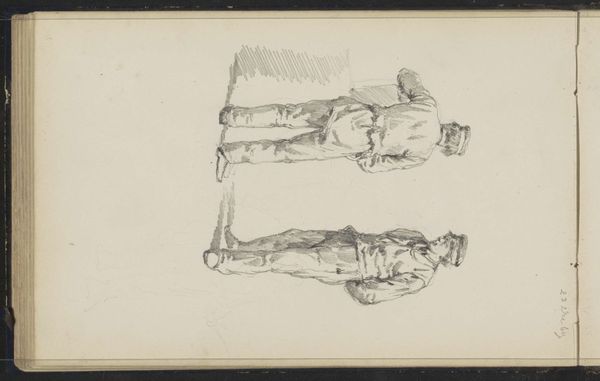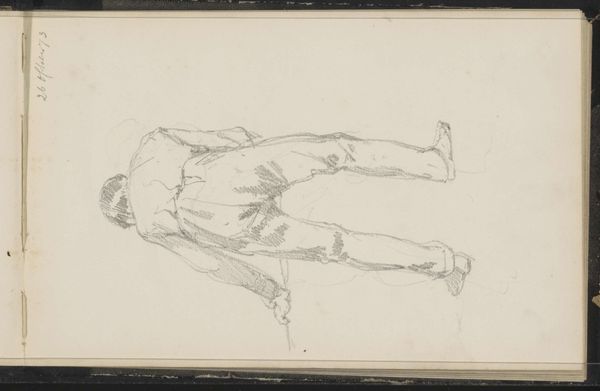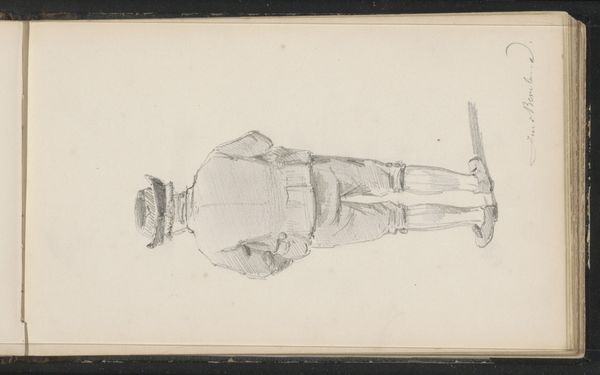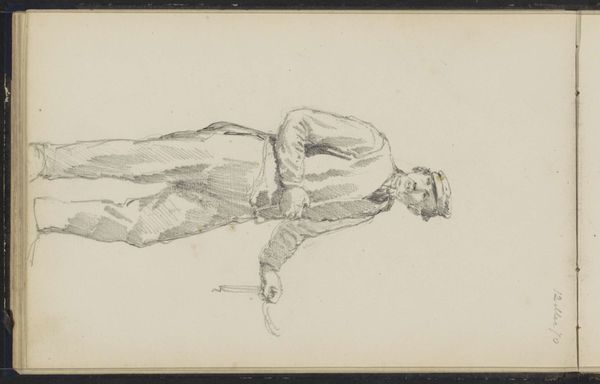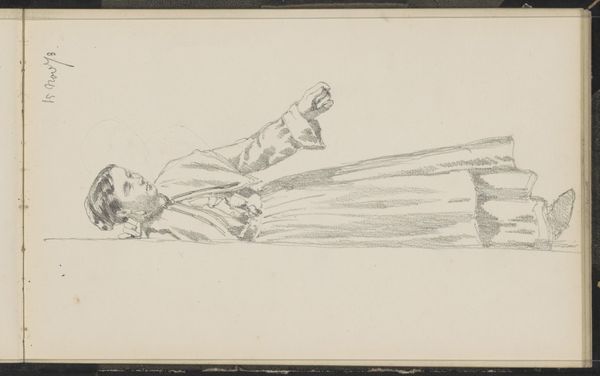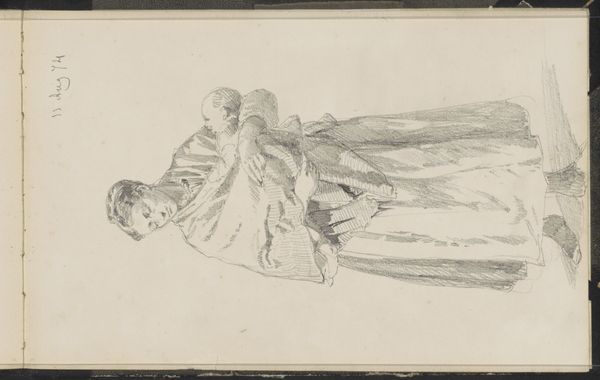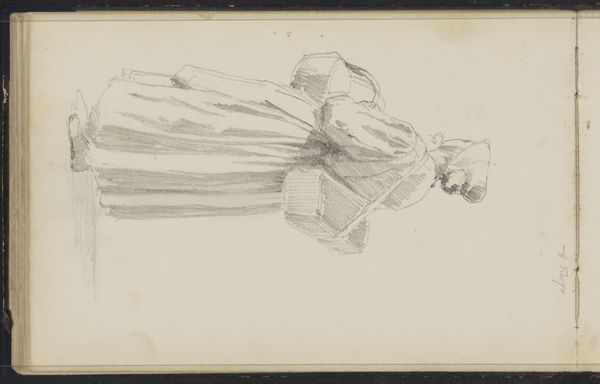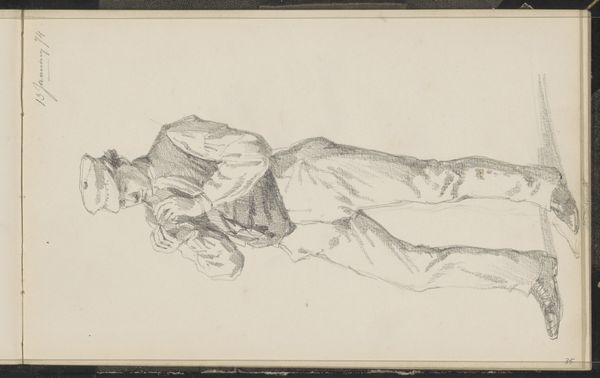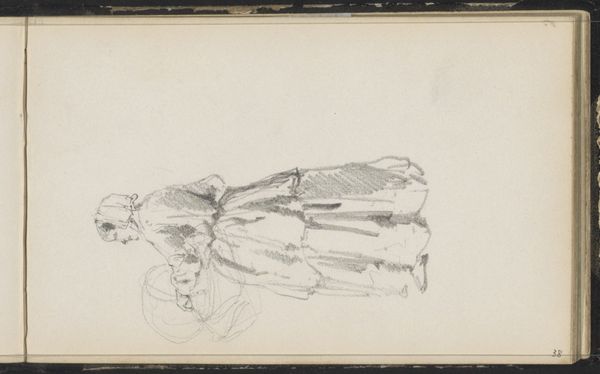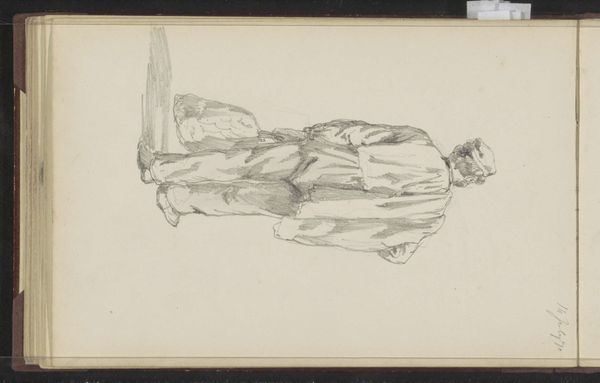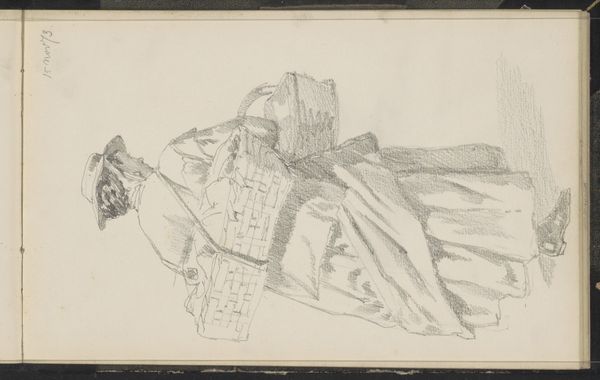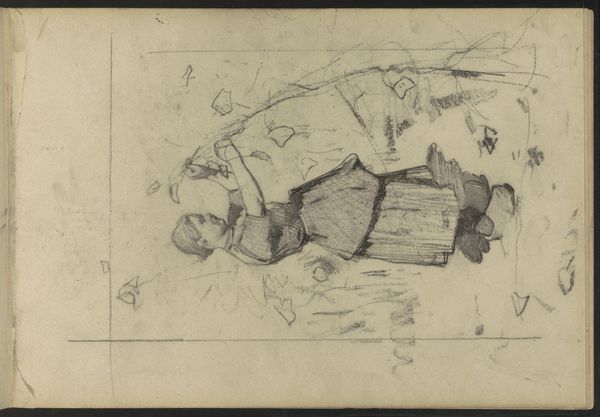
drawing, pencil
#
portrait
#
drawing
#
aged paper
#
toned paper
#
light pencil work
#
pen sketch
#
sketch book
#
personal sketchbook
#
ink drawing experimentation
#
pen-ink sketch
#
pencil
#
sketchbook drawing
#
genre-painting
#
sketchbook art
#
realism
Copyright: Rijks Museum: Open Domain
Editor: This is a pencil drawing by Cornelis Springer, dating from around 1856 to 1861, titled "Man in kostuum uit Zuid-Beveland." It looks like a quick sketch, very light and simple, yet detailed in its portrayal of the clothing. What stands out to you in its composition? Curator: The effectiveness of the piece resides primarily in its efficient articulation of form through line. Observe how Springer employs varied line weights – thicker lines to define the contours of the figure and costume, and finer, more delicate strokes to suggest internal details and shading. Note the artist's use of hatching and cross-hatching; how would you say that this contributes to our understanding of the form? Editor: I see, it gives a sense of depth and texture to the otherwise flat surface of the paper, particularly in rendering the folds of the garment and the shape of the hat. Is it common to see that much hatching in such an early sketch? Curator: Precisely. Moreover, consider the overall organization of the lines themselves. Springer isn’t just replicating what he sees, but also thoughtfully constructing an image using fundamental graphic elements. Notice how he directs our eye to certain areas and away from others by adjusting line density. Do you notice where the sketch is most dense with lines? Editor: It is at the coat, especially near the buttons, but also in the man's facial features. So, it’s like he used a sort of visual hierarchy through the strategic variation of line to accentuate areas he deemed most significant. Curator: Yes, it's through the precise arrangement and manipulation of these formal elements that the artist brings the image to life and engages the viewer's eye. He seems to want to display and value the lines as elements on the page. Editor: That’s a fantastic insight. I was so focused on the subject of the sketch, I missed the brilliance of Springer’s approach to form! Curator: Indeed. It’s a testament to the power of formal analysis – looking closely at the "how" rather than just the "what" of a work of art can reveal a whole new level of meaning and appreciation.
Comments
No comments
Be the first to comment and join the conversation on the ultimate creative platform.
